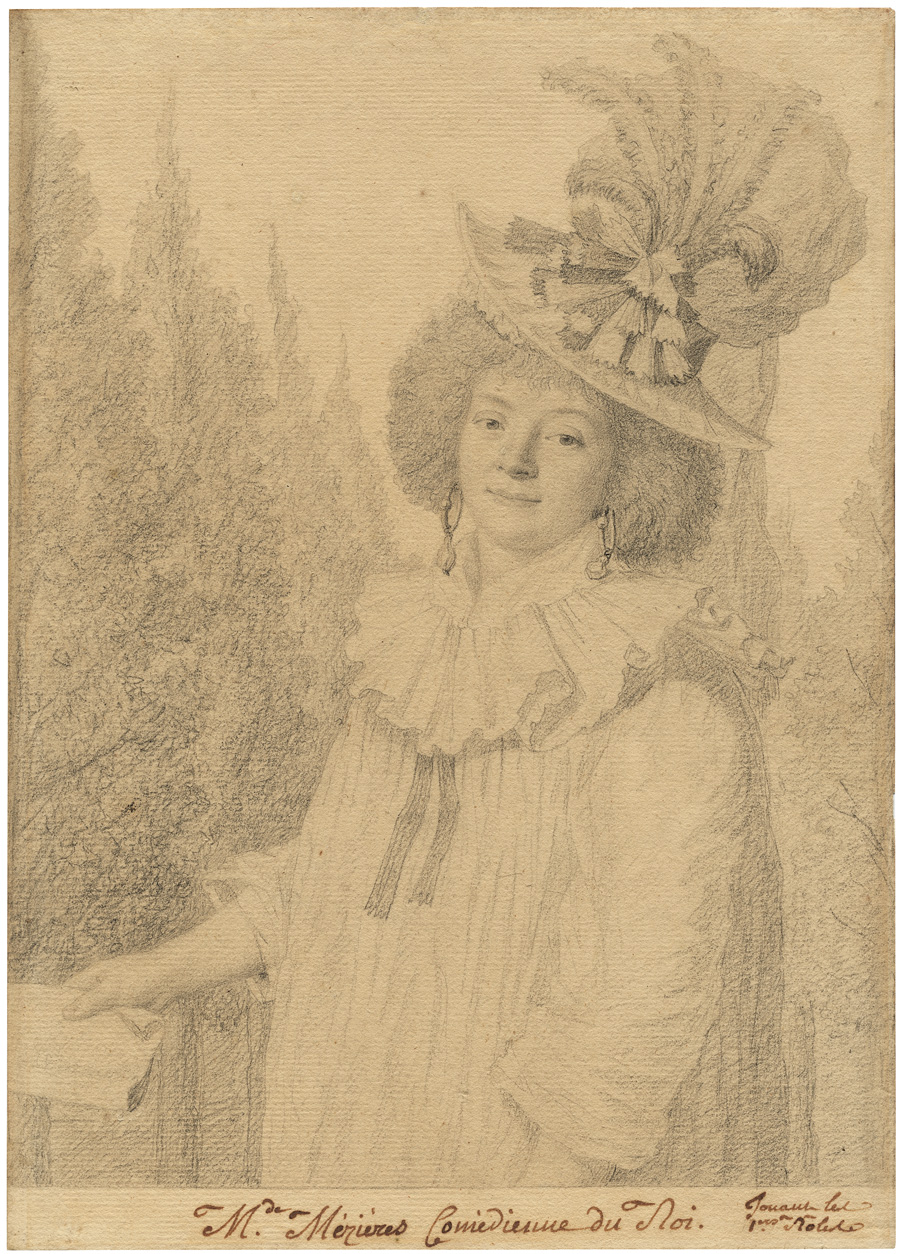Loading the page ...
Hilaire Ledru
(1769 Opi – 1840 Paris)
Portrait of Madame Mézières, Comédienne du Roi. Pencil with stumping. 29.4 x 20.8 cm. Inscribed below in pen and brown ink: M. Mézières Comédienne du Roi. Jouant les 1ers rôles.
This appealing and intimate portrait of an actress is as artistically exquisite as it is rare. By 1859, when P. Hédouin published an obituary of its author, the painter and draughtsman Hilaire Ledru, the artist had fallen completely into oblivion (Gazette des Beaux-Arts, 1859, III, pp. 230–236). And yet Ledru, who came from a village near Douai in northern France and was trained as an artist in Paris, was a sought-after portraitist during the period of the Directory. Especially popular were his "pointillé" portrait drawings, whose technical refinement was in keeping with the prevailing taste of the time. Ledru was a close friend of another gifted chroniqueur of Parisian society, the brilliant draughtsman Louis Leopold Boilly (1761–1845), who was roughly the same age and also hailed from the north of France. Their careers had much in common. Both artists made their living with small-format portraits and worked under difficult conditions amid the envy and rivalries of the French capital’s art scene. But while Boilly at least had the satisfaction of being awarded the Legion of Honour in 1833 – the first and only distinction he was to receive – Hilaire Ledru died destitute and forgotten. How many gifted but impoverished artists must there have been eking out a precarious existence in the Parisian metropolis, which by the mid-19th century already numbered a million inhabitants? A scenario à la Balzac!
The Portrait of Madame Mézières, which is reproduced in Hédouin’s essay as a wood engraving, was probably done in the 1790s. The appeal of the young woman, who is shown in half-length, lies in her melancholy beauty. She is wearing a theatrical costume with a Pierrot collar, while a daringly designed plumed hat sets off the pretty face that regards the beholder with the ghost of a smile. In her right hand the comédienne holds the text from which she is about to recite. A hazy row of trees closes off the background of this very sensitively executed portrait. Ledru’s drawing technique, which cleverly combines soft and hard pencils, is of the greatest delicacy. The soft pencil produces amazingly subtle transitions and imbues the details of the face, such as the eyebrows, nose and lips, with a delicate lustre. A sharp pencil has been used to capture the wonderfully lively eyes and the individual strands of the abundant hair, while a mild light is used to bring out the softness of the complexion. It was this tradition of draughtmanship in France that paved the way for such later giants as Jean-Auguste-Dominique Ingres.
